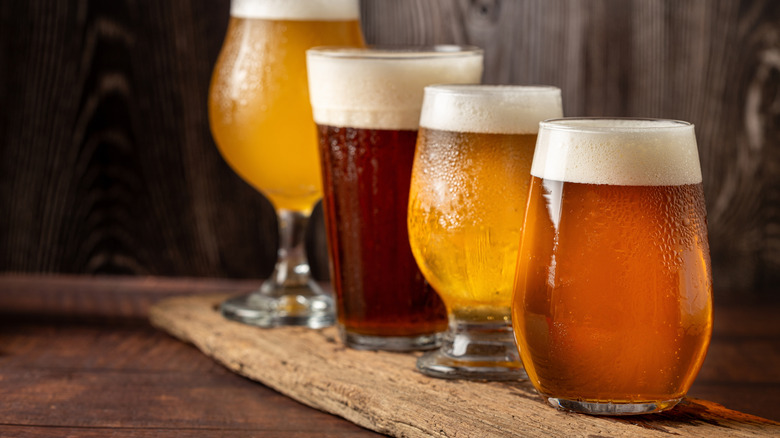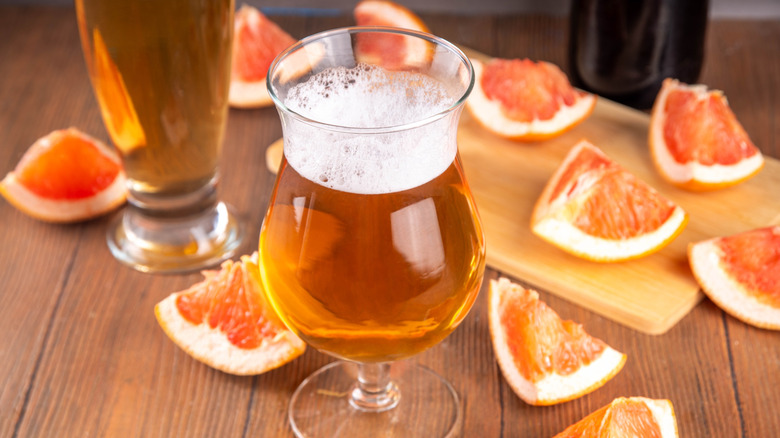The Best Temperature To Serve Sour Beers
Nothing inspires a smack of the lips like a crisp, acidic sip of sour beer. Rather than taking the modern route of brewing, sour beer is a special category of beverage that uses wild yeast and occasionally bacteria for tart-tasting results. However, the real question is how to enjoy it. According to Geoff Bragg, Master Beer Judge at BJCP, there's a specific temperature to aim for.
"Sour beers are generally served in the 40-50 degrees Fahrenheit range," Bragg explains. "There are some funky barnyard characters that may take too much of a front seat in a Lambic at warmer temperatures. Some of the newer, less traditional fruited sours may even be served over ice as a refresher."
Don't be afraid to push the boat out by dropping the Fahrenheit a little. The 50-55 degrees Fahrenheit mark might be the former industry standard, but don't be afraid to go a little lower. For higher acidity sour pints, lowering the temperature neutralizes the intensity — shocking your taste buds into lesser detection of those harsher qualities. In other words, it creates a more easygoing tasting experience. While warmish levels are the norm, the distinctive flavor and ability to withstand colder serving styles could be why sour varieties are amongst the best beers for people who don't like beer.
Ready for some inspiration? "Lindemann's Fruitesse is an example of a beer that the brewer is looking to serve over ice at bars and restaurants," Bragg adds. Keep that in mind when dreaming about the best sour beers for summer.
What happens when sour beer is served incorrectly?
What actually happens if you serve sour beer at the "wrong" temperature? Generally, this variety is best enjoyed at marginally warmer levels unless you specifically wish to rule out sharper notes of acidity. This all boils down to science; heat creates energy, and taste relies on smell. Beer releases volatile molecules — tiny particles that bounce around and reach our nostrils — but without enough energy, these become lethargic and harder to detect. Therefore, the direct result of a sour beer served too cold is a loss of taste qualities.
On that note, you should never put beer in the freezer. Here's why: Cans might explode when frozen, and the thawing of ice crystals annihilates the drink's carbonation levels. Beer foam stones are a safer bet for enjoying a cooler drink without risking loss of fizz or dilution.
The other end of the spectrum is the impact of serving a sour beer that is too warm. Do you know what happens if you store beer at room temperature for too long? A few degrees Fahrenheit might not sound like much, but it risks destabilizing your foam and decreasing the pint's PH. For sour beer, acidity levels are especially integral. Imagine gulping into something flat-tasting after expecting a tart flavor profile. By all means, be creative within the advised temperature range of 40-50 degrees Fahrenheit, but be mindful of veering outside these benchmarks. Nobody wants a ruined pint.

